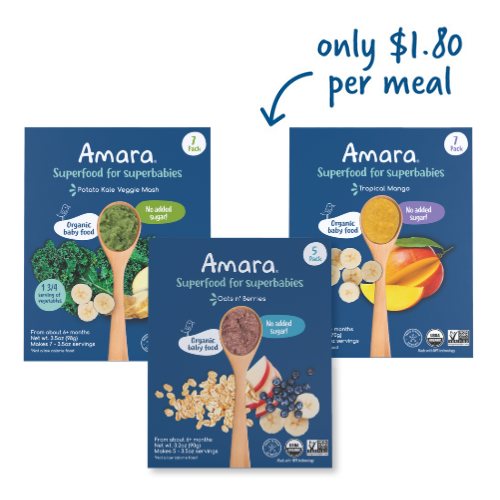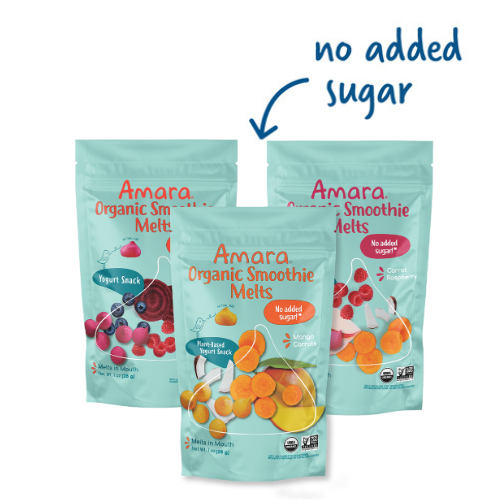
General Toddler Nutrition (1-3 yrs)
Why is nutrition so important during toddlerhood?
If you’re reading this article you’re likely well familiar with the basic feeding timeline leading up to toddlerhood: breastmilk or infant formula exclusively for the first 4-6 months; starting solids around 4-6 months; and then the months and months of complementary feeding, during which you gradually introduce your baby to more and more foods, in increasing amounts, over time (and spend approximately 7 full weeks of your life cleaning up after the mess this creates).
Maybe you also already know how important the brief stretch of time that is toddlerhood is in the development of a child’s nutritional health – not to be overdramatic (cough), but it is theliteral foundation of a child’s eating habits, including general ideas about food, taste preferences, openness to trying new foods (aka “having an adventurous palate,” if you like the foodie way of putting it), meal/snack patterns, and sense of hunger/satiety. This is not to mention all the cognitive and motor skills development that comes part and parcel with learning how to eat.
And, if you haven’t already, you will soon begin to see that setting the stage for your child’s success in the nutrition department can sometimes force you to look in the mirror. Despite the fact that they act like moody puppies, toddlers noticeeverything,and they are born imitators. They see us snacking, and they want some; they see us decline to try something, and they do the same; they hear us say “I don’t like X,” and they start saying it, too; they see us use our fingers for a baby carrot and they think to eat everything with their hands (there goes the table manners…); if they detect stress or anxiety from us surrounding food or mealtimes, they pick up on that, as well. Yes, there is no faster way to learn your own dietary faults than spending time with a toddler.
It’s a great strategy for self-reflection… if you can stand it, LOL.
In all seriousness, though, toddlerhood is a window of opportunity when it comes to the table. Without putting too much pressure on ourselves, as parents, we might see the swath of time from 1-3 years as the chance to help our children learn to eat to fullness rather than by a plate, develop the habit of trying foods through repeated exposure rather than rejecting the unfamiliar, explore a diversity of natural taste and textures rather than the monotony of processed foods, and discover the joy of wholesome eating rather than the stress of it. (Sounds fun, right?!)
In an ideal world, we’d all dish up a wide variety of natural, nutritious, delicious foods to our toddlers on the regular. We’d choose organic foods by region and season. We’d invite our toddlers to partake in meal prep, and serve them IG-worthy meal presentation. (Strangely enough, presentation makes a difference with little children – who knew?)
But in reality, most of us can’t do all of this for every meal, or maybe even every day. This isn’t an episode ofLeave it To Beaver – it’s life. It’s messy, and we can’t always do everything just the way we’d like to. That’s okay. (And if you can, good for you -- share your secrets!)
When youdohave the time to do all (or any) of this^^, savor it, and when you don’t, just work to keep in mind the most salient points to focus on with regard to toddler nutrition:
- Avoid unnatural sugar. Steer clear of added sugars, sugar-sweetened beverages, and the like. Water is the best option for drinking.
- Aim for 3-5 ounces of whole grains daily – most toddlers’ grain consumption is dominated by cereals, breads, rolls, bagels, and tortillas. Swap those out for whole-grain crackers, pasta, or rice where you can.
- Aim for 1-2 cups of vegetables per day – most children in the US simply don’t consume enough veggie portions, and those that do typically lack variety (think: white potatoes, white potatoes, white potatoes). Try to incorporate new raw or cooked vegetables along with prepared meals, and you can talk up the vibrant colors, unique flavors, and different textures with your child to enhance the excitement. If you can include seasonal vegetables (ideally, organic), all the better. (Also, remember – ifyou show excitement about vegetables, that goes a long way.)
- Aim for 1-1.5 cups of fruit per day – yes, fresh fruit is wonderful! Even better if you can hone in on seasonal fresh fruits where you live. (Frozen fruit has its place too, of course, but just double check that it doesn’t contain any added sugar… dang, it’s seriously everywhere…) Fruit juices are less than ideal, for both the likelihood of added sugar as well as the lack of fiber and texture compared to the experience of eating raw fruit. Furthermore, learning how to chewactual food is crucial – this is one of the many problems with our culture’s overreliance on grab-n-go pouches.
- Aim for 2-5 ounces of protein per day – most American children do consume sufficient protein on a daily basis, but thequality of their protein portions tends to be lacking. Lean meats, seafood, nuts, seeds, soy, and legumes are ideal protein choices, and certainly preferable over proteins high in sodium (i.e., pepperoni) and/or saturated fats (i.e., pepperoni). … yes, sausages or cold meats/meats products, I imagine with pepperoni is clear what we mean, no?
- Minimize consumption of sweets –have we mentioned added sugar?? When young children take in more sweets, savory snacks, or sugary beverages, it often comes at the expense of other more nutrient-dense foods, besides contributing to overall higher intake of calories, sugar, and salt.
If you can build these “rules”^^ into your family’s eating habits, your toddler will pick them up naturally (really!), and everyone will be left better off. When you can invite your child into the kitchen to help prepare a meal or a photo-worthy snack, have at it, but in the meantime, sticking to these basics will serve you and your kiddo well.
And Amara is here to help, because we believe that nutrition need not be sacrificed for convenience – check out our whole line of complementary foods for infants, based on whole grains, fruits, vegetables, and legumes, plus our new line of delicious toddler snacks.
*Please note: toddlers are at risk of choking, especially if they are in a hurry or eating certain foods liable to block a child’s windpipe. Common foods that pose special risk for choking in toddlers include: hot dogs, large chunks of peanut butter, nuts (peanuts especially), raw cherries with pits, hard/round candies, whole grapes, raw carrots, and popcorn.
References, literature:
. myplate.gov
. https://www.nal.usda.gov/fnic/toddler-nutrition
. healthychildren.org
. JT Dwyer, The Feeding Infants and Toddlers Study (FITS) 2016: Moving forward
. LK Riley et al., Nutrition in Toddlers, Am Fam Physician 2018
Resources:
 Amara's Chief Nutritionist: Sonia A. Schiess, PhD in Nutrition, specialized in the introduction of solids and liquids to infants. Sonia's passion started when she was studying nutrition and dietetics in university, completing a post degree in Human Nutrition. Later on, she completed her PhD as a nutritionist, with a focus on introducing food in the first year of a baby's life. Her wide experience gives her a unique perspective, drawing from her time in clinics, hospitals, independent consulting and university research. She's authored several papers including "Introduction of complementary feeding"; "Introduction of potentially allergenic foods in the infant's diet during the first year of life" and "Intake of energy providing liquids during the first year of life" in five European countries. The combination of Sonia's science and our chef's magic ensures every Amara product is not only optimized for your baby's health but is delicious as well.
Amara's Chief Nutritionist: Sonia A. Schiess, PhD in Nutrition, specialized in the introduction of solids and liquids to infants. Sonia's passion started when she was studying nutrition and dietetics in university, completing a post degree in Human Nutrition. Later on, she completed her PhD as a nutritionist, with a focus on introducing food in the first year of a baby's life. Her wide experience gives her a unique perspective, drawing from her time in clinics, hospitals, independent consulting and university research. She's authored several papers including "Introduction of complementary feeding"; "Introduction of potentially allergenic foods in the infant's diet during the first year of life" and "Intake of energy providing liquids during the first year of life" in five European countries. The combination of Sonia's science and our chef's magic ensures every Amara product is not only optimized for your baby's health but is delicious as well.








Leave A Comment